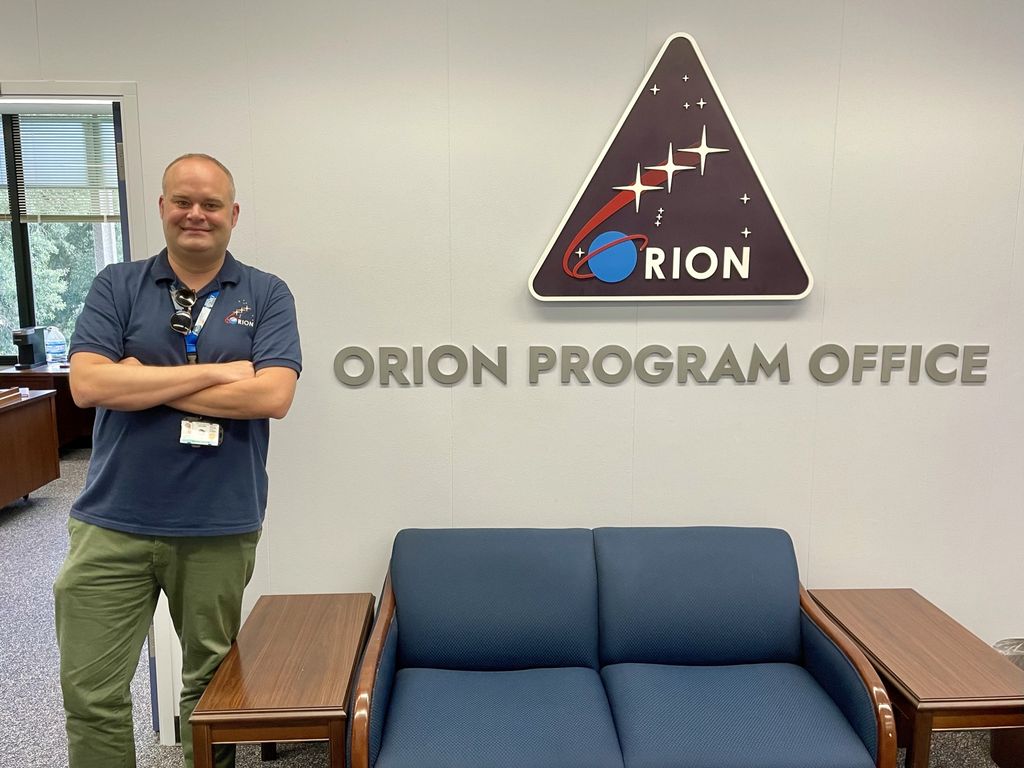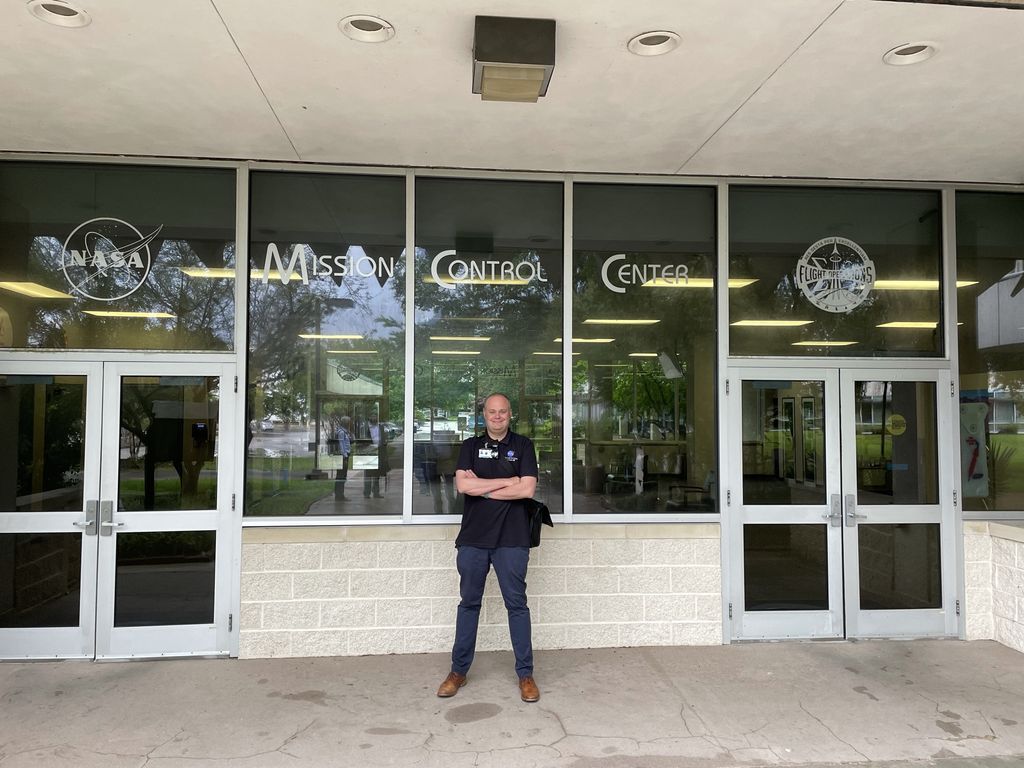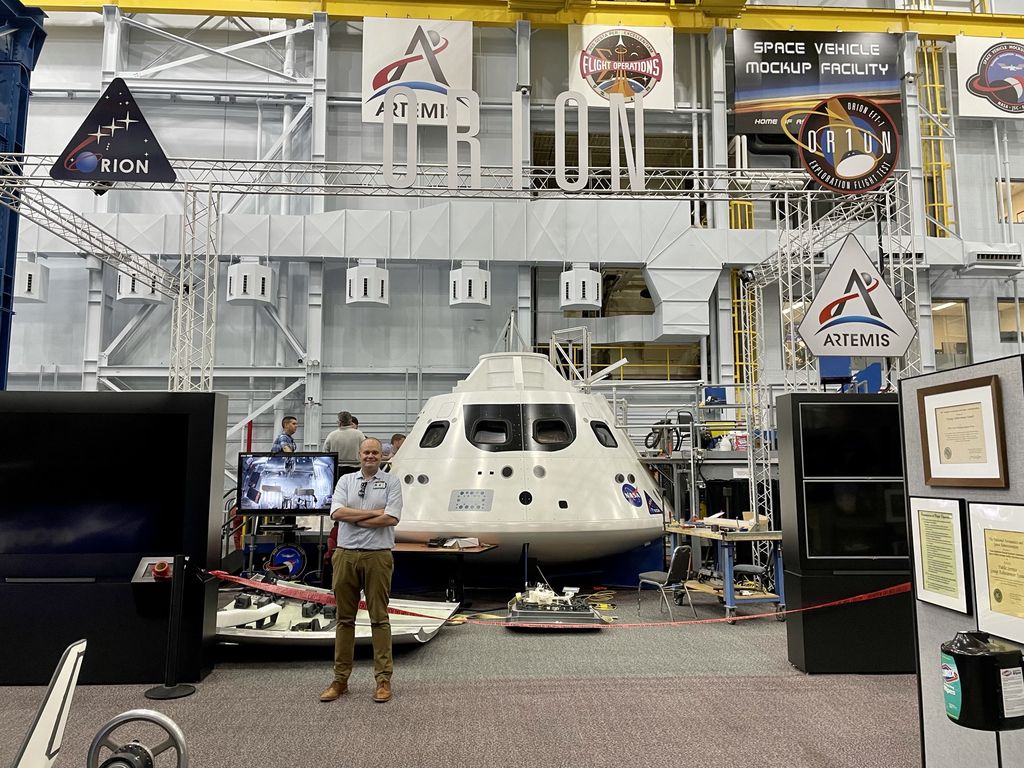It takes thousands of people to build a lunar spacecraft, let’s meet them and see what they do.
What is your name and your role on the European Service Module team?
My name is Tobias Langener, I am from Germany, and I am the Lead Propulsion Engineer for the European Service Module for ESA.

How long have you been involved in European Service Module’s development and what were/are your tasks?
I started working on the project in 2018 as a propulsion engineer in a support role where I was responsible for several components of the propulsion system but also for following the acceptance testing for ESA, i.e. making sure the workmanship of the system is according to its specifications. After a short excursion as a systems engineer in the project team I landed in my current role in 2021. Now I am responsible for overseeing the development, qualification, procurement and testing of European Service Module’s propulsion subsystem, the subsystem that will fly NASA’s Orion capsule through space and around the moon and will always provide the proper orientation of the spacecraft. As the European lead for the propulsion console I will also support the Artemis I flight from Houston.
What is your educational background and prior work experience? How did you come to work on European Service Module?
I studied Aerospace Engineering at the University of Stuttgart in Germany, which is one of the largest educational centres for space engineering in Europe. As part of the studies, I also spent a year in the USA at the Rensselaer Polytechnic Institute in Troy, New York. I specialised in space system and thermodynamics/heat transfer.
After my graduation I continued a PhD program also at Stuttgart on an innovative cooling method that can be used for various types of aerospace engines. As this program was in collaboration with ESA I had ties already with the agency and I was able to start working here right after my PhD. I was involved in many research and development activities, early-phase system studies, but also worked as propulsion engineer for the Exomars missions before joining full-time the European Service Module.
What is the most notable or memorable moment during your time working on European Service Module?
There are a few of memorable moments for me being in the ESM team:
- The first was seeing the complexity of the ESM spacecraft during my first visit in the clean room at Airbus in Bremen. The density of cables, tubing, and components in the spacecraft was just unbelievable.
- Working at the Neil Armstrong Operations & Checkout Building at NASA’s Kennedy Space Center was a great experience because of the history this building radiated. This is where the Apollo capsules were assembled and tested and I walked through the same doors and corridors as Neil Armstrong, Buzz Aldrin and Michael Collins and all the other Apollo astronauts.
- I supported several propulsion test campaigns at NASA’s White Sands Test Facility in the desert of New Mexico, USA. That was hot in many ways: ambient temperatures and rocket engine exhaust gases…
- And finally working with the US teams on the integrated mission simulations at the Mission Control Center at the NASA Johnson Space Center.

What does it mean to you to be part of the larger team helping to get humans back on the Moon?
It sometimes feels surreal. You are faced with challenges every day on every level, are buried in details and it just feels like in many other busy jobs where one must deal with day-to-day issues. However, the result of facing these challenges is that a spacecraft becomes reality which is part of the largest space programme in the world (Artemis) and that will eventually fly astronauts back to the moon. Now that we start to deliver more European Service Modules on a regular basis the vast (vast for the space industry) industrial complex in the background becomes more and more visible, and it feels very real compared to paper studies or early phase programs.
What is one thing you’d like the European public to know about your job?
The space industry is a unique industry to work in because it challenges not only technological boundaries. It is a very international industry. At ESA I work with colleagues from many different backgrounds, but also because there are always cooperation and suppliers beyond the European borders. ESA is one of the best places to work for – so come join us!
What concerns the European Service Module I think it is important to understand that it is the first time NASA has trusted an external partner to provide a critical module on one of their flagship missions and that ESA’s contribution is significant to the overall success of the Artemis program.
Do you have any advice for future generations interested in space exploration?
Just follow what you love. Study or work in the field you like and be ambitious and determined. Everything else will fall into place when you do so.


 Automated Transfer Vehicle page
Automated Transfer Vehicle page ATV blog archive
ATV blog archive
 NASA Orion page
NASA Orion page NASA Artemis
NASA Artemis Airbus Orion page
Airbus Orion page
Discussion: one comment
With regards to the tree seeds that are going to space, what role does the moon actually play in the process?
Moon dirt?
Moon atmosphere?
Altitude?